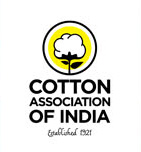Naseem Usman
17-02-2025
KARACHI: A continuous drop in cotton prices over the past week has plunged the local cotton market into uncertainty. Analysts warn that the surge in imported cotton, yarn, and fabric is severely impacting domestic cotton cultivation and the textile industry.
Mixed trends were observed at the New York Cotton Exchange, while Pakistan witnessed a record increase in imports of cotton, yarn, and fabric during the current fiscal year. This influx has driven local cotton and lint prices to historic lows. Chairman Cotton Ginners Forum Ahsan ul Haq predicts that if this trend persists, cotton cultivation could decline by 30-40% in 2025-26, posing significant challenges to the national economy.
The local textile industry faces severe issues due to a flood of imported goods and soaring energy prices. Industrialists argue that reducing production costs is impossible without slashing electricity and gas tariffs.
Head Transfer of Technology Central Cotton Research Institute Multan Sajid Mahmood said that there is an urgent need for a centralised Cotton Body to address systemic issues. “Heavy investment in modern research and technology, coupled with a comprehensive national policy spanning cotton cultivation to textile exports, is critical for sustainable solutions,” he stated.
The All Pakistan Textile Mills Association (APTMA) has reiterated its demand for a level playing field. Lamenting what it called lack of concrete action from authorities, its spokesperson warned, “If uniform policies for imported and local goods are not implemented, thousands of factories will shut down.”
Farmers and industrialists stress that without immediate price stabilisation, reduced energy costs, and import controls, Pakistan’s textile exports will face mounting pressure, further straining foreign exchange reserves.
During the past week, the local cotton market experienced an overall decline in cotton prices. Business activity remained limited as textile spinners showed greater interest in imported cotton, which offers better quality at lower prices along with the benefits of the EFS facility.
Additionally, significant quantities of cotton yarn and fabric are being imported, whereas local cotton is subject to an 18% sales tax. To address this disparity, the Agriculture Tax Task Force of FPCCI and the SIFC have recommended measures to establish a level playing field. These include withdrawing the EFS facility on imported cotton, imposing import duties, or eliminating the sales tax on local cotton to ensure fair competition.
Last week, two cotton conferences were held in Karachi and Multan to promote the revival of cotton cultivation. The conferences, organised by PCCC and Better Cotton in Karachi, and PCCC and Cotton Connect in Multan, featured proposals and recommendations for early sowing of cotton, among other topics.
In addition, the Punjab Ministry of Agriculture is holding meetings and seminars to raise awareness among cotton farmers in the province. Reports indicate that early cotton cultivation has begun in some areas.
In Punjab, 10 lac acres of land have been allocated for early sowing of cotton. The government’s efforts to promote cotton cultivation are expected to boost production and support farmers in the province.
In Sindh, the price of quality cotton per maund and as per payment terms is in between Rs 16,700 to Rs 17,800. In Punjab, the cotton price remains in between Rs 17,500 to Rs 17,800 per maund. The Phutti is almost ended. In Balochistan, the cotton stock is also near ending. The Karachi Cotton Association’s Spot Rate Committee reduced the spot rate by Rs 300 per maund, settling at Rs 17,500.
Naseem Usman, Chairman of the Karachi Cotton Brokers Forum, stated that international cotton prices are mixed, with New York cotton futures trading between 66.50 to 68.00 American cents per pound. According to the USDA’s weekly export and sales report, two lac forty four thousand and seven hundred bales were sold for the 2024-25 season.
Bangladesh topped the list by purchasing fifty four thousand and one hundred bales, followed by Vietnam with fifty one thousand and six hundred bales. Turkey is on number third with thirty six thousand and seven hundred bales and Pakistan is on number fourth with twenty nine thousand and seven hundred bales.
For the 2025-26 Season, nine teen thousand and one hundred bales were sold. Honduras led with ten thousand bales, Mexico remained second with five thousand bales, and Pakistan secured third place with twenty three hundred bales.
https://www.brecorder.com/news/40348366/weekly-cotton-review-spot-rate-down-as-prices-continue-to-fallb (Source: Business Recorder)
